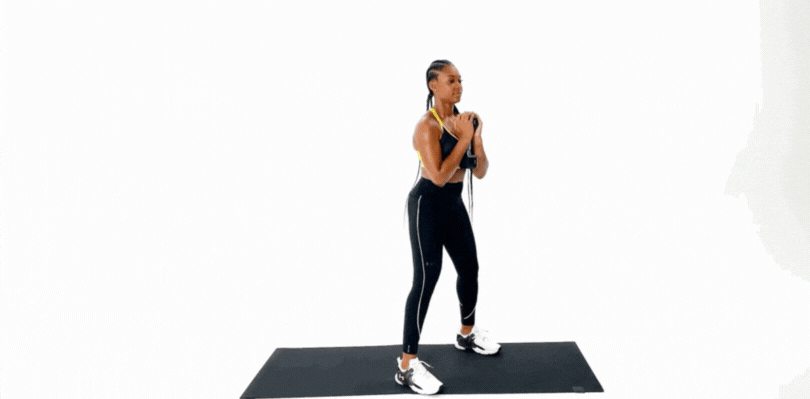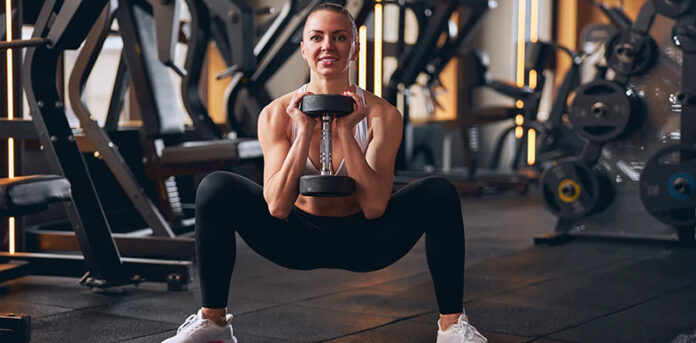Are you ready to take your fitness game to the next level and sculpt a stronger, more resilient body? Look no further than the goblet squat – a powerhouse exercise that can revolutionize your workout routine. But, before you dive headfirst into this transformative move, it’s crucial to understand the dos and don’ts that will ensure your success and safety.
In our latest blog post, we’re unveiling the ultimate goblet squat guide, packed with expert insights and insider tips. Whether you’re a seasoned fitness enthusiast or just starting your journey, these dos and don’ts are your roadmap to mastering this phenomenal exercise. Discover the secrets to perfect form, injury prevention, and turbocharging your results. Get ready to unlock your full potential and transform your physique with the goblet squat – it all starts here!
Goblet Squat Dos

Here are some of the Goblet Squat Dos to help you perform this exercise effectively and safely:
Choose The Right Weight
Opt for a kettlebell or dumbbell that suits your fitness level. Start with a manageable weight that allows you to perform the exercise with proper form. As you progress, gradually increase the weight to continue challenging yourself.
Maintain Proper Form
Focus on maintaining a neutral spine throughout the movement. Keep your chest up, shoulders back, and core engaged. Ensure your feet are shoulder-width apart with toes slightly turned out to facilitate a natural squatting motion.
Control The Descent
When squatting down, control your movement by lowering yourself in a slow and controlled manner. This prevents sudden jolts to your knees and helps activate the right muscle groups. Aim to bring your thighs parallel to the ground or lower if flexibility allows.
Use Proper Breathing Technique
Inhale deeply as you lower into the squat, and exhale forcefully as you push back up. This controlled breathing helps stabilize your core and provides essential support during the exercise.
Engage Your Glutes And Quads
As you rise from the squat position, focus on squeezing your glutes and quads to powerfully extend your hips and knees. This engages the major leg muscles effectively and maximizes the benefits of the exercise.
Gradually Increase Reps And Sets
Start with a moderate number of repetitions and sets that challenge you without compromising form. As your strength improves, gradually increase the reps and sets. However, always prioritize quality over quantity to avoid injury.
By following these Goblet Squat Dos, you’ll not only build strength and muscle but also reduce the risk of injury and make the most out of this fantastic exercise in your fitness routine.
Goblet Squat Don’ts
Here are a few important Goblet Squat Don’ts to ensure you perform the exercise safely and effectively:
Don’t Round Your Back
Avoid rounding your lower back during the squat. Maintaining a neutral spine is crucial to prevent injury. Rounding your back can place excessive stress on the lumbar region, leading to pain or discomfort.
Don’t Use Excessive Weight
While it’s essential to challenge yourself, using excessively heavy weights can compromise your form and increase the risk of injury. Start with a weight you can control, and only increase it gradually as your strength improves.
Don’t Let Your Knees Cave In
Pay close attention to your knee alignment. Avoid allowing your knees to cave inward during the squat. This can strain your knee joints and potentially lead to injury. Keep your knees tracking in line with your toes.
Don’t Rush Through The Movement
Avoid rushing through goblet squats. Rapid, jerky movements can lead to poor form and increase the risk of injury. Focus on a slow, controlled descent and ascent to engage the right muscles and maintain stability.
Don’t Neglect Breathing
Don’t hold your breath during the exercise. Holding your breath can increase intra-abdominal pressure and put unnecessary strain on your cardiovascular system. Remember to breathe in on the way down and exhale on the way up.
Don’t Neglect Warm-Up And Mobility
Skipping a proper warm-up or mobility routine can hinder your performance and increase the risk of injury. Warm up with dynamic stretches and mobility exercises to prepare your muscles and joints for the goblet squat.
By avoiding these Goblet Squat Don’ts, you’ll reduce the risk of injury, maintain proper form, and get the most out of this exercise for building strength and muscle. Safety and technique should always be your top priorities when incorporating goblet squats into your workout routine.
Benefits Of Doing Goblet Squat
Here are some benefits of incorporating goblet squats into your workout routine:
Full-Body Workout
Goblet squats are a compound exercise that engages multiple muscle groups simultaneously. They work your quadriceps, hamstrings, glutes, calves, lower back, and core, making them an excellent choice for a full-body workout.
Improved Lower Body Strength
Goblet squats are particularly effective at strengthening your lower body. They target the major leg muscles, helping you develop powerful and well-defined quads, hamstrings, and glutes.
Enhanced Core Strength
Holding a weight close to your chest forces your core muscles to work hard to stabilize your body during the squat. This results in improved core strength and stability, which is beneficial for overall functional fitness.
Better Posture And Spine Health
Goblet squats encourage proper spinal alignment and posture. By keeping your chest up and back straight, you reduce the risk of developing poor posture habits and potentially alleviate lower back pain over time.
Increased Mobility And Flexibility
Regularly performing goblet squats can improve hip and ankle mobility, which is essential for maintaining a healthy range of motion in your lower body. This enhanced flexibility can contribute to better overall athleticism and reduced risk of injury.
Functional Strength
Goblet squats mimic real-life movements like picking up objects from the ground or lifting a child. This functional strength can improve your daily activities and reduce the risk of injury during everyday tasks.
Cardiovascular Benefits
While not a cardiovascular exercise on its own, incorporating goblet squats into a high-intensity interval training (HIIT) routine or circuit workout can elevate your heart rate and provide cardiovascular benefits, making your workouts more efficient.
Incorporating goblet squats into your fitness routine not only helps you build strength and muscle but also contributes to better overall health, mobility, and functional fitness. Whether you’re an athlete, a fitness enthusiast, or someone looking to improve your overall well-being, goblet squats offer a wide range of benefits for people of all fitness levels.
What Experts Say About Goblet Squat
Experts across the fitness industry consistently praise the goblet squat as a versatile and effective exercise. Certified trainers and strength coaches emphasize its ability to target multiple muscle groups, making it a valuable addition to any workout regimen. They highlight its role in improving lower body strength, core stability, and functional fitness.
Furthermore, experts also commend goblet squats for their lower risk of injury compared to other squat variations, particularly when performed with proper form and appropriate weights. Whether you’re a novice or a seasoned athlete, experts recommend incorporating goblet squats into your routine for enhanced muscle development, improved posture, and increased overall strength and mobility.
FAQs
Why is proper form so crucial when doing goblet squats?
Proper form in goblet squats is essential because it ensures that you engage the right muscles while minimizing the risk of injury. Maintaining a neutral spine, tracking your knees with your toes, and controlling the descent and ascent of the squat are critical components of good form. Correct form not only maximizes the effectiveness of the exercise by targeting the intended muscle groups but also reduces the strain on your joints, particularly your lower back and knees. Neglecting form can lead to injuries and hinder your progress.
How do I determine the right weight for goblet squats?
The appropriate weight for goblet squats depends on your individual fitness level and goals. Start with a weight that allows you to complete 8-12 reps with good form. If you can easily perform more than 12 reps, consider increasing the weight. Conversely, if you struggle to complete 8 reps with proper form, reduce the weight. The right weight should challenge you but not compromise your technique. Gradually increase the weight as you become stronger, always prioritizing safety and form over lifting heavy weights.
Can goblet squats be adapted for individuals with mobility limitations or injuries?
Yes, goblet squats can be adapted to accommodate individuals with mobility limitations or injuries. For those with reduced mobility, performing goblet squats with a raised heel (using weight plates or an elevated surface) can help improve the range of motion. Individuals with knee or lower back issues should consult a healthcare professional or physical therapist for personalized modifications and exercises that suit their condition. Safety is paramount, and adjustments should be made to ensure a pain-free and safe workout tailored to individual needs. Always seek guidance if you have specific concerns about your mobility or injuries.

